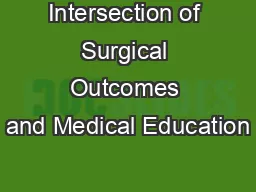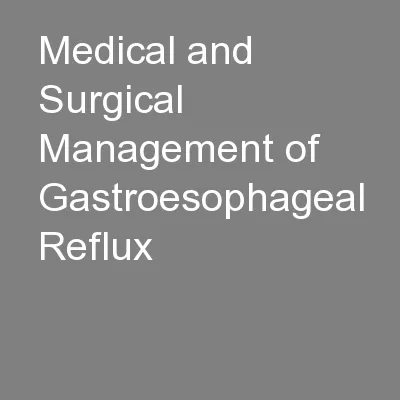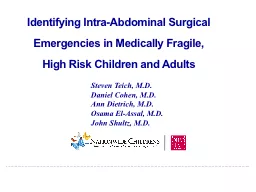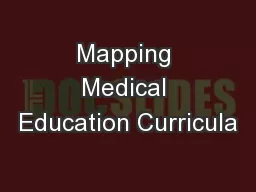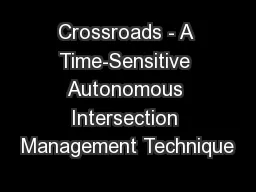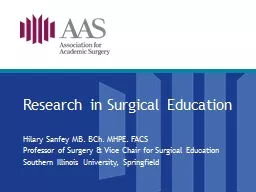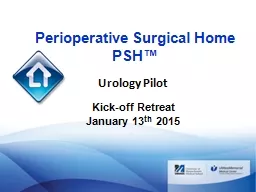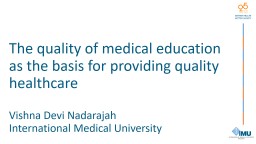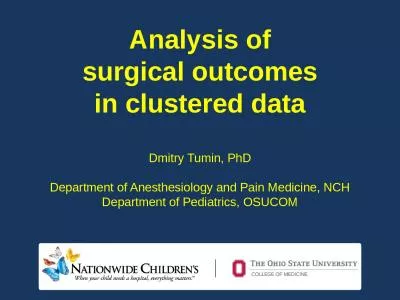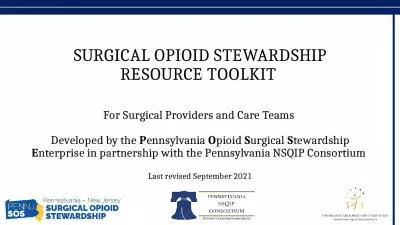PPT-Intersection of Surgical Outcomes and Medical Education
Author : natalia-silvester | Published Date : 2016-12-12
A CMOs Perspective How can I get housestaff to think about valuebased clinical medicine using outcomes data Can outcomes data be used to incorporate a culture of
Presentation Embed Code
Download Presentation
Download Presentation The PPT/PDF document "Intersection of Surgical Outcomes and Me..." is the property of its rightful owner. Permission is granted to download and print the materials on this website for personal, non-commercial use only, and to display it on your personal computer provided you do not modify the materials and that you retain all copyright notices contained in the materials. By downloading content from our website, you accept the terms of this agreement.
Intersection of Surgical Outcomes and Medical Education: Transcript
Download Rules Of Document
"Intersection of Surgical Outcomes and Medical Education"The content belongs to its owner. You may download and print it for personal use, without modification, and keep all copyright notices. By downloading, you agree to these terms.
Related Documents

